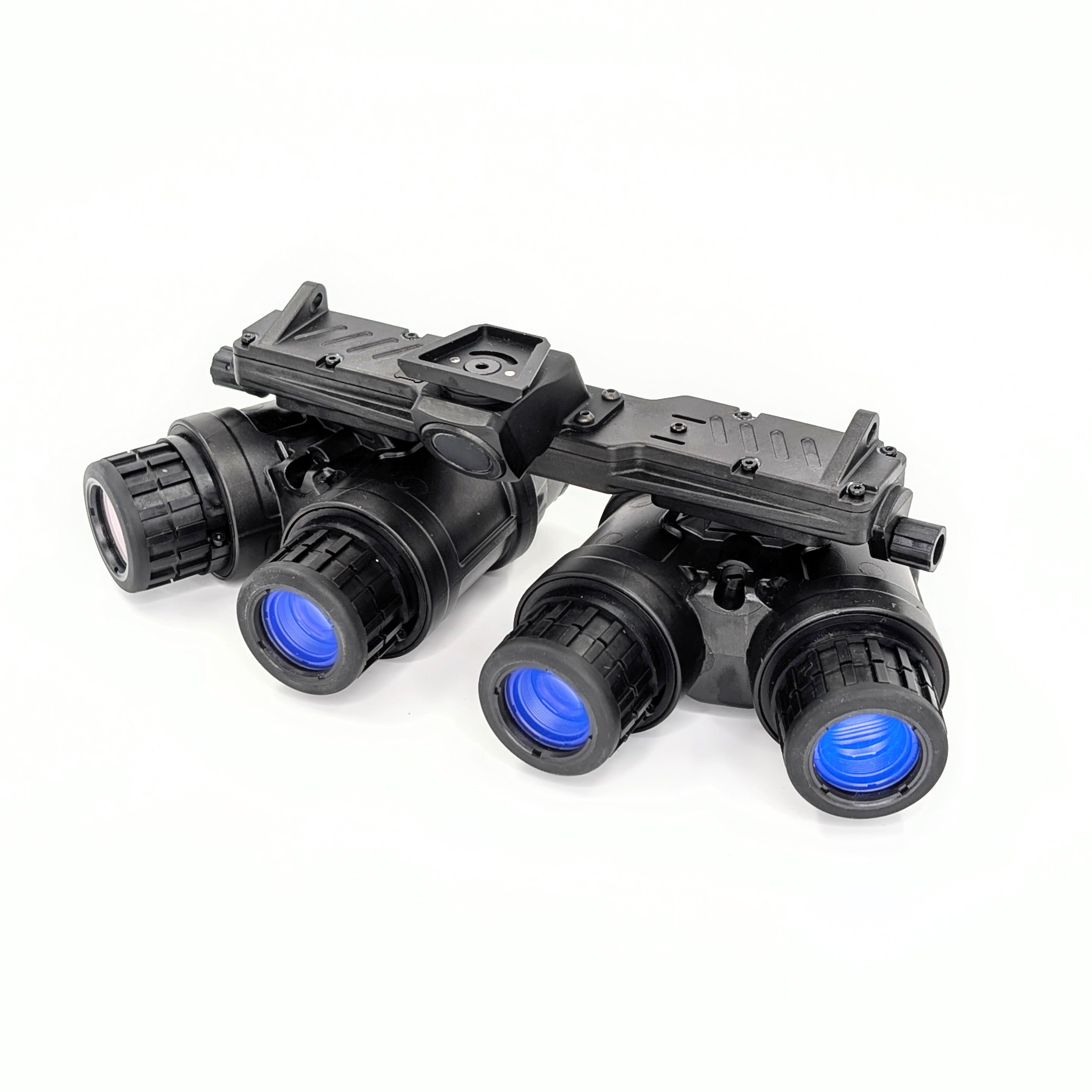Photonis 4G+ is the highest end tube offering from Photonis. The minimum specifications are much higher than that of their ECHO and ECHO+ tubes, but they are more than twice the cost. Are they worth it? How do they stack up?
Here we conducted a side by side test. For this test, we used our Hoffman ANV-126A digital NVG test set with USAF resolution chart. We used a RNVG (Ruggedized Night Vision Goggle) and used a 4G+ tube on the right side, and either a ECHO or ECHO+ tube on the left side depending on the test. This is why in the videos the center rectangle is different on the sides, the Hoffman uses it for collimation however the light levels between the sides are calibrated to be equal.
The test uses RPO 3.0 objective lenses as these lenses provide increased transmission and have the best center resolution and contrast. We used Ether eyepieces as they provide the most generous focal distance for larger pupils, as we needed a high magnification lens in order to see the finest line pair sets. In general testing using a large objective camera should be avoided as most eyepieces are only meant for a 6mm pupil at 25mm focal distance. Exceeding these specifications results in significant edge distortion and vignetting and will significantly skew results. However, since we are using Ether eyepieces and we are only testing the very center of the image the results are considered acceptable using even testing grounds.
Since our tests use a resolution chart, only tubes of similar resolution were used for the test in order to mitigate resolution as a major determining factor of results. We were hoping to convey the differences a user would generally experience from differences in gain, SNR, and tube technology. We also performed an additional test using a pair of brand new, soon to be officially released, BCO LPMR 4K recording devices to show how tubes react to a gradual reduction of light levels.
As can be observed, the 4G+ retains better resolution, less noise, and overall higher performance than ECHO in all light levels.
One can observe that the ECHO PLUS tube in this test performs admirably. It is our belief that this specific ECHO PLUS tube may have been a 4G fallout tube (tube intended as 4G but failed due to a larger than acceptable blemish), as the contrast, resolution, and other characteristics seem better than the average ECHO PLUS tube we have seen.
In general, 4G+ retains noticeably better image quality than ECHO and ECHO PLUS tubes. These are tested in what one could call a laboratory setting, whereas in real life performance these minor differences in contrast and system resolution (different from tube resolution) are immediately noticeable in low to medium light situations and tangibly affect user experience.
It is also notable that 4G+ employs improved autogating which provides a better dynamic light experience than ECHO technology. The image from a 4G tube is noticeably better than ECHO because the 4G production line employs more stringent quality standards and uses higher quality parts. Low light performance, resolution, contrast, and dynamic light performance are all improved. We have noticed that ECHO tubes have variations in quality between tubes in the image screens, fibre optic inverters, and front end protective coatings. These minor variations are not noticeable to most users, and can only be spotted by users with extensive experience under different systems as well as a keen eye to spot very specific differences in texture and depth.

Many people ask how 4G+ compares to Gen 3. There is a wide variation in tube quality with Gen 3. When compared to Elbit and L3 tubes, 4G+ is actually in the same league but not top of the league in terms of image quality due to lower brightness. 4G technology offers improved bright light suppression over Elbit and L3, however Elbit and L3 offer better low light performance due to increased tube brightness and sensitivity. However, it is important to note that while the 4G+ produces a darker image, the image does not appear to be of significantly lower quality. If gain is lowered on an Elbit or L3 tube to the same brightness as 4G+, the image quality is very similar. Noise, resolution, and the ability to resolve an image are very similar.
In short, 4G+ tubes are noticeably better than ECHO and ECHO PLUS. They fall short but are in the same league as Elbit and L3. They are roughly equivalent to OMNI era ITT/Harris green tubes in terms of image quality and ability to resolve objects, though I would consider 4G+ superior because of improved gating.
Whether or not the cost of 4G+ is worth it over a standard ECHO or ECHO PLUS for the end user is up to them and their individual needs. For the average end user, it is likely not worth double the price of an ECHO system. But for the nightvision collector and connoisseur, it is a fantastic addition to a collection and very satisfying to use. I have certainly added a set of 4G+ with RPO 3.0 to my own collection.








